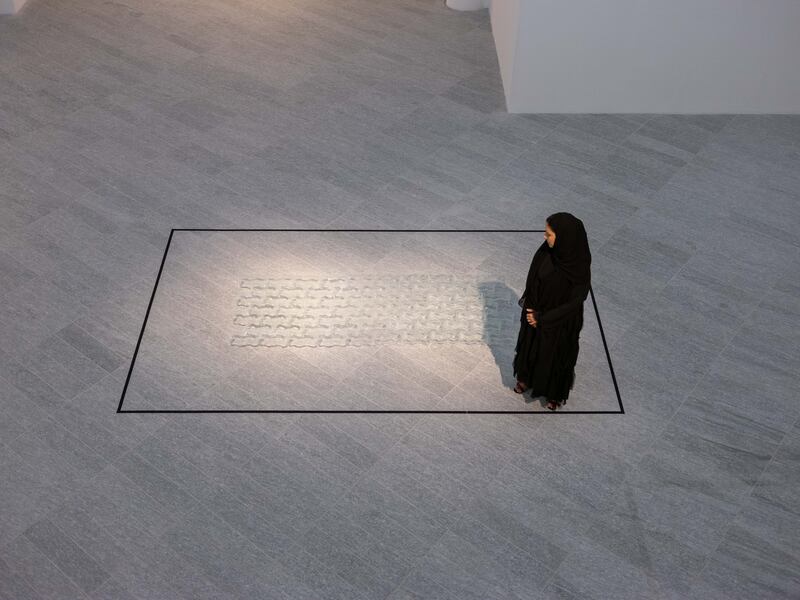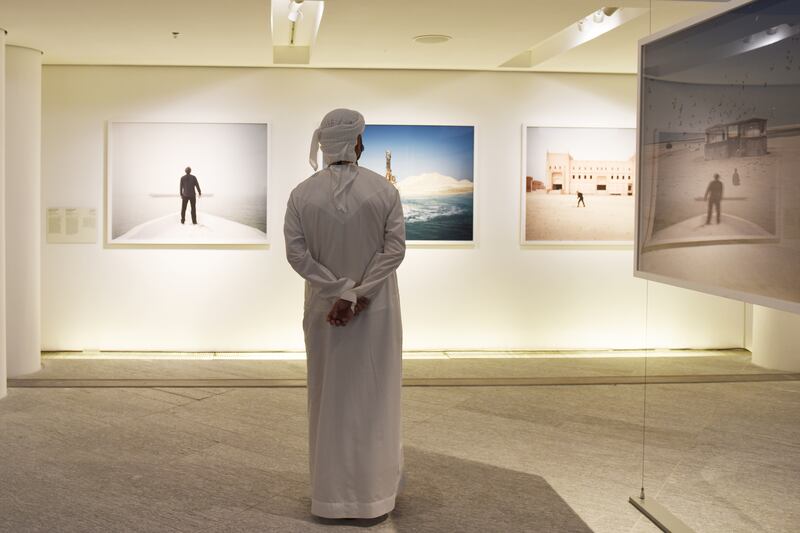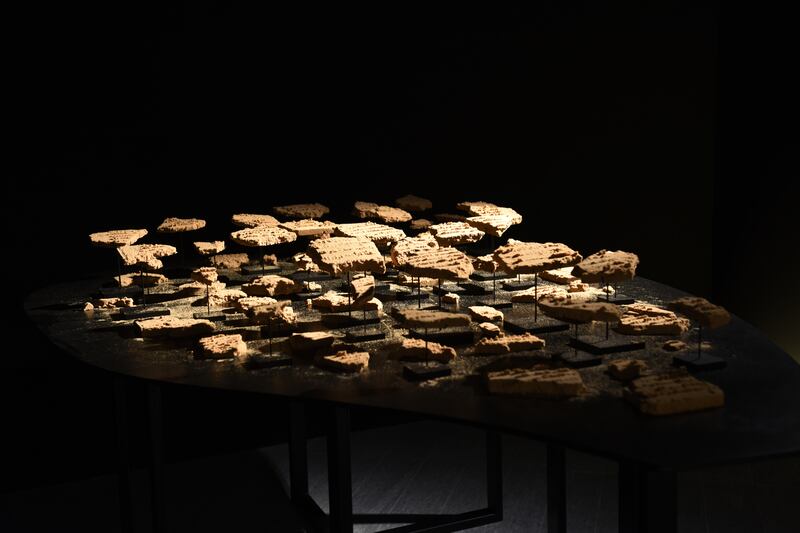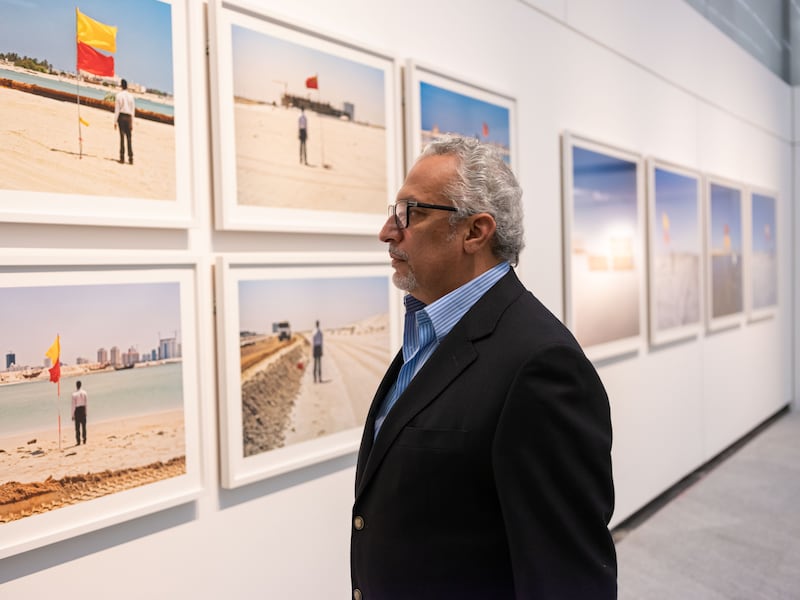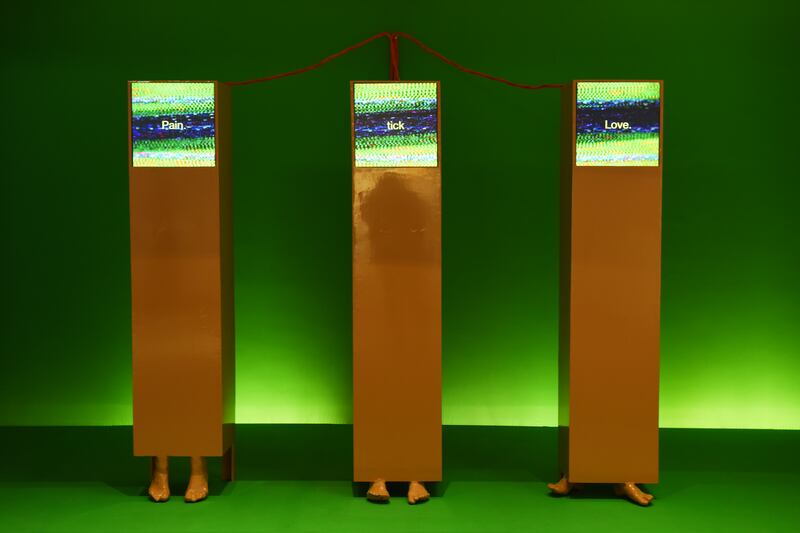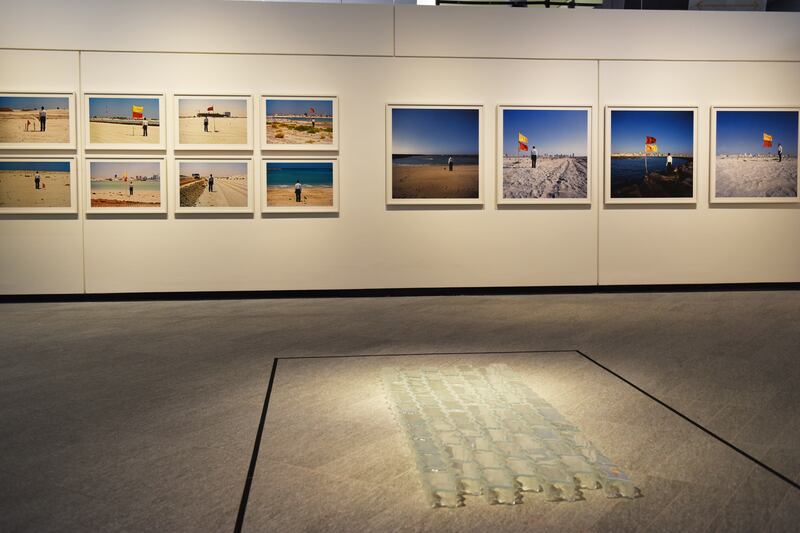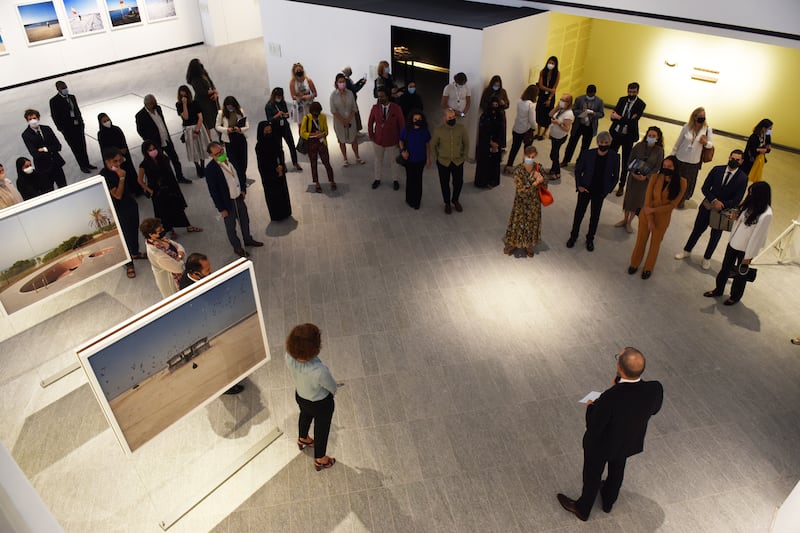Memory, time and territory defy easy definitions, and the works by the seven artists in the Louvre Abu Dhabi Art Here 2021 exhibition excavate them further, opening up new ways to think about how we remember things and how place can shape us.
The show, which opens on November 18, is a departure from the museum’s usual offerings. It is a contemporary art show for one, and features works in the running for the inaugural Richard Mille Art Prize, launched this year by Louvre Abu Dhabi in partnership with the Swiss watch company.
Seven artists from the UAE have been selected from more than 200 applicants who submitted proposals responding to the theme of memory, time and territory through an open call in July. Among them is Taus Makhacheva, with her 2020 work Mining Serendipity, which comprises video and “body-oriented artefacts”, a jewellery set with a chain necklace and seven pendants that act as a kind of high-tech talisman.
Produced by Makhacheva with Mineral Weather, a studio in Moscow, the work taps into how traditional jewellery can, as the artist describes it, “structure your psychological, cultural and emotional body”. Makhacheva’s resulting designs serve different purposes. One pendant, the Highly Superior Biographical Memory Candy, contains a porcelain nut coated in candy that, when ingested, can cultivate feelings of empathy. Another is the Morphic Resonance Compass, meant to spark telepathic connection to flora and fauna. Visitors can pick up the jewellery set and play with their own configurations of its components. Though a bit off-theme, at its core, Mining Serendipity – which the artist calls a “toolkit for different encounters” – imaginatively contemplates new ways of connection in the aftermath of the pandemic.
Next to this work is Nasser Alzayani’s installation Watering the distant, deserting the near, which was completed this year. Laid out like museum artefacts, an arrangement of sand tablets are slowly falling apart, with particles from the fragments, which bear raised lines of Arabic script, breaking off until they become no more than dust. Memory functions similarly, each detail chipped off by external conditions, or simply, the inability of the thought to hold itself together.
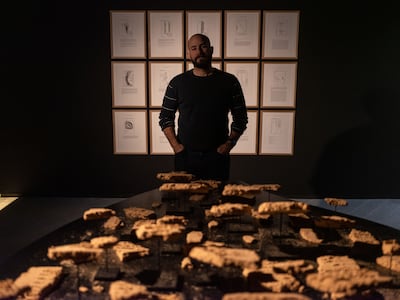
For Alzayani, the memory he is preserving is of Ain Adhari, a spring in Bahrain that has recently dried up. “I’m thinking of sand as a metaphor for memory. It’s fragile; it breaks apart. It is reformed into these objects that can hold new meaning, and it’s only through their reconstruction that we begin to have a complete story and history of this place,” he says.
Produced via a laser-cut stencilling method, the tablets of compressed sand mimic what the spring site looks like today. Their ever-shifting state poetically marks time, and how the erasure of landscape affects collective and personal memory.
The installation also features works on paper that juxtapose visual data about the spring’s water levels with song lyrics, poetry and personal recollections of Ain Adhari. Playing in the background are collected recordings of songs and news broadcasts about the drying spring. Some of the added elements feel extraneous to the work, with the sand tables already exemplifying much of what the artist is trying to say.
Meanwhile, Latifa Saeed’s The Pathway exudes a kind of purity. Remodelling pavement bricks common in Dubai and other emirates, her glass version of these building blocks sit quietly on the floor. By turning the typically hard material into something breakable, Saeed compels us to slow down when approaching the piece. It also performs a dual trick, causing one to inspect an object so often ignored in plain sight in everyday life, while using a translucent material that can allude examination.
Like in Alzayani’s work, territory in The Pathway is an uncertain thing that could crumble or crack at any moment. Saeed’s work evokes the fragile progress of the Gulf, where hyper-development constantly defies standard timelines, yet leaves it vulnerable to sudden change.
The Pathway leads to Mohammed Kazem’s Photographs with Flags, a series of photographs produced by the established Emirati artist in 1997 and then again in 2003. Taken by artist Hassan Sharif, who was Kazem’s mentor, the images show the younger artist looking out from construction sites, standing next to marker flags erected around Al Mamzar, which sits between Dubai and Sharjah, and Al Khan in Sharjah.
“I was capturing these elements that surrounded me in the city, which was booming, especially Dubai. We saw the city was growing vertically, but also creeping horizontally to the sea,” he recalls, noting that the future he referred to in these photographs has now become the present.
“What the future was is where we are now. I went to back Al Khan, and now there is no place to stand,” he says.
Kazem’s images tell an ongoing story of construction and collapse, and his subject is a witness to it all, though what is next is still uncertain. “We have to keep it open. That is why the series looks like a story, where I’m moving spontaneously from one site to another. So many things have changed in our society and continue to,” he says.
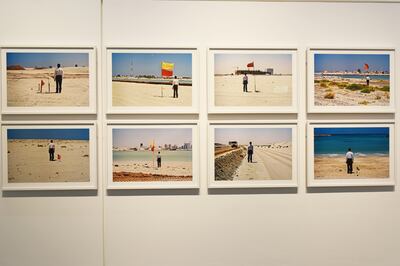
Though Tarek Al-Ghoussein’s ongoing series from 2015 Odysseus also features a lone figure looking out on the landscape in some photos, his perspective is wider, more abstract. Kazem shows us what his subject sees, giving his works a more human, personal viewpoint, but Al Ghoussein’s lens is like a higher power that casts its eyes beyond horizons or from above.
While Kazem’s works reveal a kind of apprehension about change, as seen in the stiff way the figure is standing, Al Ghoussein’s Odysseus, who sometimes blends into his surroundings, shows someone adrift in that change. His interventions within the landscape demonstrate a quiet battle between people and the environment.
Unique to the show is Mays Albaik’s Awaiting Weightlessness, which features aluminium video sculptures that are strangely anthropomorphic, with human feet modelled after the artist’s own. Interlinked video essays play across three screens, each one operating on different tempos: a second, a minute, an hour.
Central to Albaik’s work is the Palestinian right of return, which the artist calls a “terror-filled hope” that pervades the Palestinian diaspora. It has particular personal relevance for Albaik as a “third-generation Palestinian refugee” who has grown up in the UAE. She considers how “time can be a measurement of distance”, counting the passage of more than seven decades since the Nakba.
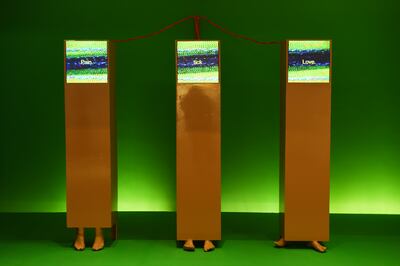
One question plays on the screen that may speak to many: “Do we wait for here to become home? Or do we wait a return?”. In a country where most of the population is from somewhere else, the idea of the homecoming always hangs in the atmosphere. “I’m trying to think of return to other places,” she says. In the context of Palestine, she says, “It’s really problem for me – how can we imagine a return that is not traumatic for the place and the returnee?”
Albaik references the work of Lebanese writer Walid Sadek, who wrote about the trauma of forced disappearances during the civil war. “He thinks of absence as an active space, so if a disappeared person actually appears, they do not refill that space. During that absence, the void continues to move, shift and grow.” In a sense, displacement replicates itself and mutates with the passage of time.
For Cristiana de Marchi, time is the great eraser, wiping memories of place. Her delicate hand-embroidered work Mapping Gaps. Beirut shows a scattered view of the city. The 11 panels depict neighbourhoods that have personal significance to the artist, who has split her time living in Beirut and Dubai, but she says that spaces between these scenes are more crucial.
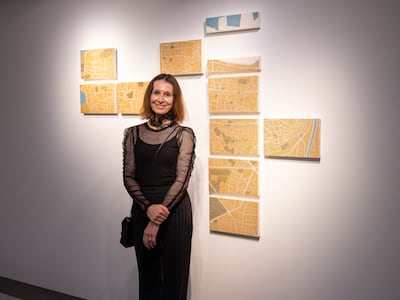
“The gaps are the essence of the work. It references gaps in memory that happen when one is obliged to be away from a place that used to be familiar and finds that memories that used to be clear in your mind are fading,” she says. “There is a frustration there, but you also feel the urge to preserve as much as you can while you still have the memory.”
There is something thoughtful and tragic in these works, produced over a year by hand. Even as the artist attempts to map out memory with every stitch, time ticks on relentlessly. Working manually, De Marchi at times forgoes accurate renderings of streets. When charting the territory of the past, memory becomes a broken compass.
Overall, Louvre Abu Dhabi Art Here 2021 provides a welcome injection of local contemporary art into the museum, which had its last dedicated presentation of UAE artists in 2017 with Co-Lab: Contemporary Art and Savoir-faire. The current exhibition may help Louvre Abu Dhabi set its roots in the UAE a little deeper, while the works in the show offer ways to understand life for many.
Louvre Abu Dhabi Art Here 2021 is on view until March 27. The winner of the Richard Mille Art Prize will be announced in January. More information is available at louvreabudhabi.ae
